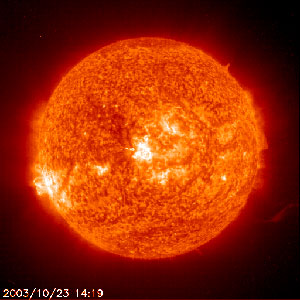
Source: Fuse Bead Flowers and Butterfly, Of Rats and Jen
The word fusion comes from a Latin term meaning "to combine."
Did you ever make something with "fuse beads"?
Small beads are put together and they combine when heat and pressure are added.

Source: Fuse Bead Flowers and Butterfly, Of Rats and Jen
Nuclear fusion works in a similar way, but with protons and neutrons instead of beads. With the proper heat and pressure, two small or light nuclei will combine to produce a heavier one.

Source: The Sun, NASA
Nuclear fusion reactions release a tremendous amount of energy. These reactions provide the energy released by the sun.
Using controlled nuclear fusion reactions as an energy source is certainly appealing. The reactants needed are inexpensive and readily available. The fusion products are usually not radioactive. One problem with using fusion as an energy source is that a tremendous amount of energy is required to get the reactants to fuse.
The lowest temperature required for any fusion reaction is above 40 million degrees Celsius. Besides the temperature problem, there is no known material that is able to confine the reaction. Currently, nuclear fusion cannot be used as an energy source due to the requirement of such high temperatures. Scientists are working to find ways to safely and practically harness the power of nuclear fusion.